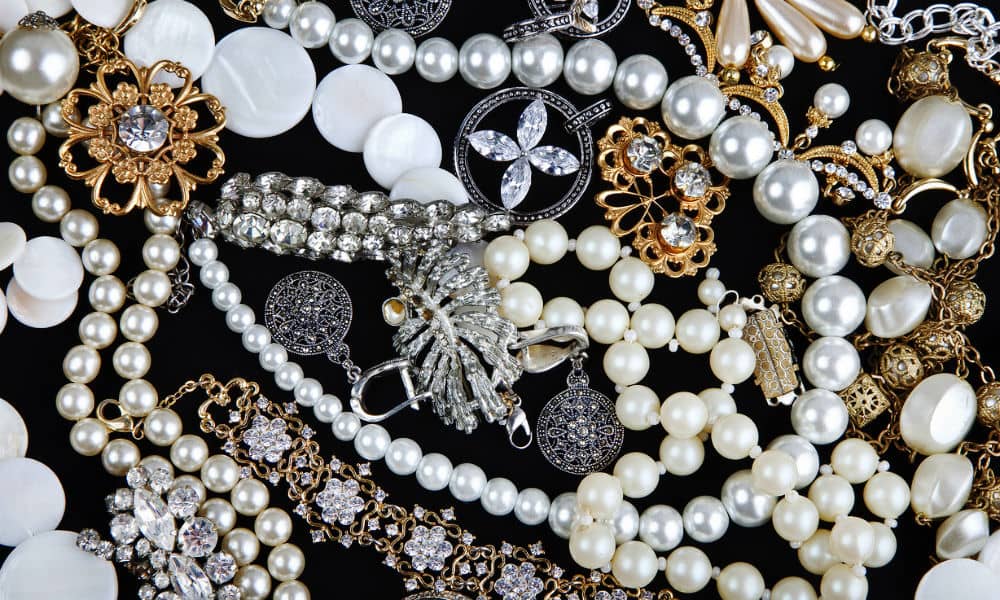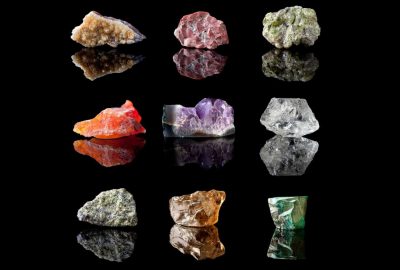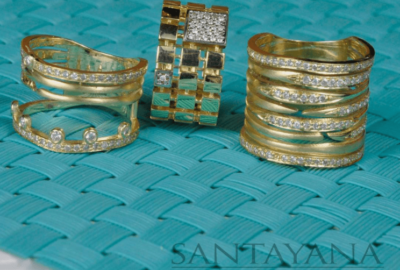Industry News
Art Deco – A style characterized by angular geometric shapes, zigzags, bold colors, molded or faceted Czech glass beads, plastics (like celluloid or Bakelite) and chrome, unlike the curves of the previous era. Also known as the geometric style that succeeded Edwardian jewelry beginning in the 1910s through the mid-1920’s. Colored stones were utilized more, and the opaque stones such as jade, onyx and coral were set in geometric shapes. Sleek animals such as Borzoi and Greyhound dogs were featured in some designs. It started out with relatively delicate designs, and progressed to a more bold and blocky style also called Art Moderne.
Art Nouveau – A style also known as “Victorian” or “Edwardian” consisting of fluid lines, floral and nature themes and natural colors. Also known for its flowing style with sinuous curves and naturalistic motifs that was popular from about 1895 to 1905. A common motif was a women’s head with flowing hair.
Arts and Crafts – A design movement that began in the late 1800s as a rebellion against the mass-produced, machine made designs of questionable aesthetic value common in the late Victorian era. The designers felt that their work should look handmade, and therefore they often left hammer marks on the piece. Although pieces were made of gold, silver was more commonly used to emphasize the craftsmanship of the piece rather than the intrinsic value of the components. Stones were commonly less expensive. Cabochon stones such as moonstone, mother or pearl, agate, amber, and enamel work was also used.
Bronze – A brownish alloy of copper and tin that is not used much in costume jewelry because it is very dense and therefore heavy.
Crystal – A glass stone or bead, usually with high lead content.
Diamond – Diamonds, a form of crystalline carbon, are prized because they are exceptionally hard and durable, have high refractivity and brilliance, and because really fine diamonds are rare. Today diamonds are valued based on the “4 C’s” of color, cut, clarity and carat size. Many diamond imitations have appeared over the years, with the most common today being the ubiquitous cubic zirconia which appears similar to a diamond to the uninitiated, but can be readily distinguished by a diamond tester which measures thermal inertia. Trained individuals, despite claims of cubic zirconia manufacturers, also have little trouble distinguishing a genuine diamond when it is examined under at least 10 power magnification.
Emerald – A gemstone of the beryl family, fine emeralds are among the most valuable gemstones. Unlike most gemstones, flaws (called inclusions by gemologists )are quite common in emeralds, so they lower the value much less than with other precious stones such a diamonds. The most highly prized emeralds are mined in Columbia. A valuable emerald will be a bright, vividly colored green. Those with a slight blue cast to the bright green are actually the most valuable color.
Many emeralds seen in jewelry are of relatively low quality. They are often dyed or oiled to improve the color and minimize flaws. If an emerald appears to be very fine, it may actually be a synthetic. There are several types of synthetic emeralds on the market, and some of them are challenging to identify, even for a trained gemologist.
Freshwater Pearl – A pearl produced by a mollusk that inhabits freshwater, usually these pearls are shaped like an uneven grain of rice. There is also a variety called Tennessee fresh water pearls that taper like a long tooth, as in the illustrated 1940’s brooch.
Gold – Since ancient times, gold has been prized for its beauty, and purity since it does not oxidize or tarnish like most other metals. It has also been used as a store of value to build wealth and shield against hard times. Gold used in jewelry is almost always alloyed with other metals since gold in its pure form is very soft and malleable, and would not wear well by itself. Much gold jewelry from the 19th century and before is not marked. Tests must be done to determine if it is solid gold and to determine purity.
The familiar Karat marking system used in the United States did not become popular until around 1890 or so. (Note that Karat with a “K” refers to gold purity, while Carat with a “C” refers to the weight of a gemstone, e.g. a one carat diamond set in a 14 karat gold ring.) The karat number refers to the parts of pure gold per 24 in the alloy. So a 14K alloy is 14/24 parts pure gold, or about 58% gold.
Other countries used a marking system well before the United States. For example, Britain has had a system of hallmarking in place for hundreds of years.
It is also common in many European and other countries to mark gold with a three digit number indicating the parts per thousand of gold. Thus gold jewelry is often marked “750” for 750/1000 gold. (Equivalent to US 18K).
In addition to many purities, alloyed gold also comes in many colors. Variations in the metals alloyed with the gold account for the ability to produce white, pink and even green gold, in addition to the familiar yellow gold. Pink gold was popular in late Victorian times, and again in the 1940s. White gold was very popular from 1900 through the 30’s.
Hair Jewelry – In the mid-19th century lockets of hair of loved ones were often preserved under glass in brooches. The hair was sometimes intricately curled or woven, and these pieces are often inscribed on the back to identify the donors. Later in the century, hair was woven into watch chains, bracelets, even earrings and given as tokens of affection. All forms of hair jewelry are very collectible today.
Jewelry – Ornaments worn by people on the body [Fr]; trinket; fine jewelry; costume jewelry, junk jewelry; gem, gemstone, precious stone. Forms of jewelry: necklace, bracelet, anklet; earring; locket, pendant, charm bracelet; ring, pinky ring; carcanet, chain, chatelaine; broach, pin, lapel pin, torque.
Pearl – A natural gemstone formed when a oyster is irritated by a substance that gets into its shell. If the irritation is a naturally occurring grain of sand, it is an Oriental pearl. If it is produced by purposefully inserting a mother-of-pearl bead, a cultured pearl is formed. A pearl that forms attached to the shell is a blister pearl, while a pearl that forms a half dome is a mabe (pronounced mah-bay) pearl. Pearls that are irregularly shaped rather than round are referred to as baroque.
Retro – A recent designation for the period in the forties when when large scale, stylized geometric forms were the rage. Pink gold, set with colored stones, sometimes in floral forms was common.
Tiffany Setting – The high pronged setting most common today for large stones such as a diamond solitaire, this setting was introduced by Tiffany & Co. in 1886.













































Leave a reply